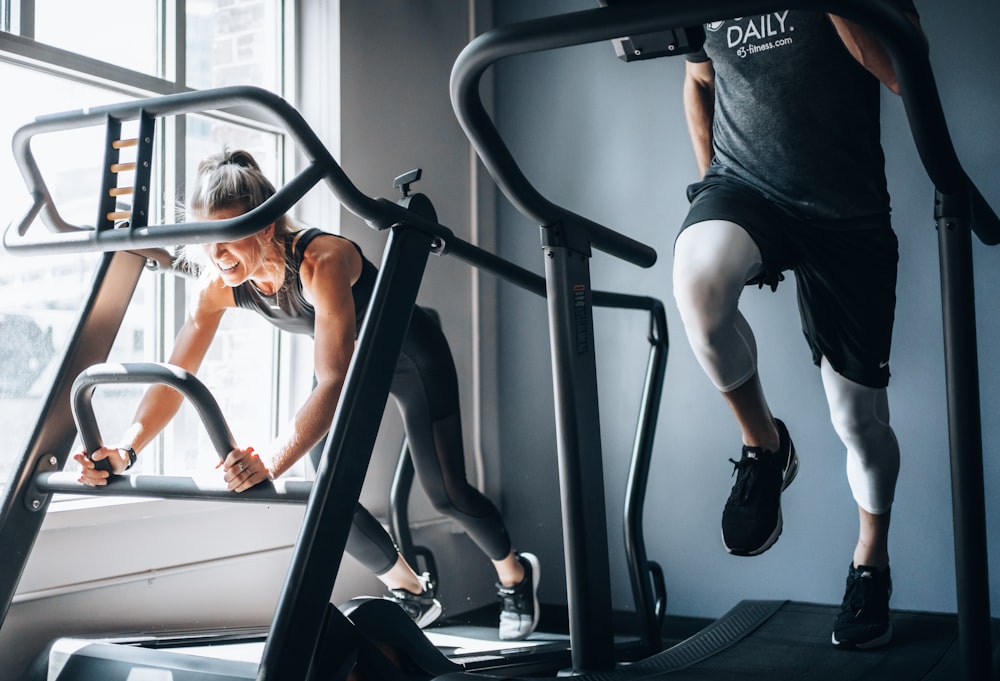
There are many reasons why you should be aware of your heart rate response to exercise. Every day, your heart pumps blood through a system of blood vessels more than 100,000km long, fuelling your entire body with oxygen, nutrients, and the power each body part needs to function.
The speed at which your heart works depends on a number of factors, including the activities you’re engaged in. When you’re exercising, your heart will naturally pump blood faster to deliver more oxygen and essential substances to the muscles and tissues you’re using.
Knowing your heart rate response to exercise can help you to plan your workout routines to burn the most fat, increase your cardiovascular endurance, and more.
You’ll be able to focus on getting your heart rate up the ideal amount for an effective workout. At the same time, you can reduce your risk of cardiac issues caused by pushing your heart too much if you track your heart rate response to exercise.
What is Heart Rate Monitoring in Exercise?
1 in 5 American adults currently use a fitness tracker or smartwatch which allows them to monitor their heart rate (among other metrics) in real-time. Tools such as Fitbit, Apple Watch, and countless others allow users to track their pulse, and use it to optimize their workouts. Smartwatches are an especially great way to track your heart rate response to exercise (and track how many calories you burn during exercise.)
Knowing your heart rate at any point in your life can be quite useful. When measured at rest, your heart rate can be an insight into your health. If you have a lower resting heart rate, this is a good sign that you’re not under immense stress.
When you measure your heart rate response to exercise, your heart rate is a tool to plan and monitor your physical activity. Is a certain low-impact workout not getting your heart rate up enough? Try something that’s a bit higher intensity, such as a spin class.
Using your wearable device, you can use your heart rate as a tool for losing weight and improving physical performance during exercise. This is because heart rate is an excellent indicator of exercise intensity. The higher the intensity, the faster your heart will beat.
In general, Barbara Bushman, PHD, and Professor of the Department of Kinesiology at Missouri state, says exercising at 55% of your maximum heart rate is considered very light exercise. 60% of your maximum heart rate is “light”, 70% is “moderate” and 85% is “vigorous”.

What is Your “Maximum Heart Rate”?
To leverage the benefits of heart rate monitoring during exercise, you’ll need to calculate your “maximum” heart rate. This is the term used to refer to the fastest your heart can beat during an intense workout. Doctors can use exercise stress tests with treadmills to determine this number.
If you don’t have immediate access to a stress test at a doctor’s office, don’t worry. You can use ready-made formulas to calculate maximum heart rate instead. For instance, a popular option is to use the number 220 minus your age.
So, the maximum heart rate for a 30 year old would be 190 beats per minute. Notably, your stress response to exercise will usually depend on a number of factors outside of your age. You can use your CircleDNA app to understand your heart’s response to exercise and plan your routines accordingly.
Once you know your maximum heart rate, you can determine your “optimum heart rate”.
Your heart rate naturally increases during exercise due to physical exertion. However, pushing yourself to the “optimum” level for your heart rate is how you make sure you’re burning more fat, building more muscle, and fuelling your body with the right oxygen and nutrients to thrive.
What is the Optimum Heart Rate for Exercise?
The American Heart Association considers around 50-85% of your maximum heart rate to be the ideal zone to improve the outcomes of your exercise routine. Exactly how far you go in terms of intensity will depend on a number of factors, including what you want to accomplish with your workout, and whether you have any pre-existing cardio conditions.
Understanding your heart rate when you exercise is how you avoid both the dangers of overexertion, and the issues of undertraining.
On the one hand, your heart rate needs to be higher during exercise than it is when you’re resting to ensure you’re putting pressure on your muscles and undergoing physical stress. The concept of “no pain, no gain” applies here. If your heart rate isn’t increasing, you’re not exercising properly.
On the other hand, going too hard with your exercise can be extremely dangerous. If you have a higher than usual heart rate response to exercise, you might risk overexertion during your routines. Taking your heart rate too high can lead to symptoms such as dehydration, dizziness, and sickness. You may even damage the outcomes of your workout.
Training at over 85% of your maximum heart rate increases may lead to shortness of breath, chest pain, atrial fibrillation, cardiac arrest, and heart attack. If you already have cardiovascular issues, your doctor may advise keeping a close eye on your heart rate during training, to ensure you don’t put your heart under undue stress.
Heart Rate Response to Exercise: Using Your Heart Rate to Improve Workout Results
The exact heart rate you need for an effective exercise depends on what you want to accomplish. In general, regularly increasing your heart rate with bouts of physical exercise, even if you only go a little above your resting heart rate, will help to strengthen your cardio muscles, which improves endurance, stability, and long-term good health.
If you want to achieve something specific, such as losing weight, you’ll need to keep your heart beating at around 70-85% of your maximum level, according to the AHA.
There’s even a heart rate range where people tend to burn more calories derived from fat, known as the “fat-burning zone”. If you’re concerned about having excess fat on your body, getting to around 59-76% of your maximum heart rate during exercise can help with this.
Going above 76%, and up to 85% can help with burning more carbohydrate-derived calories than fat-derived calories. Studies into the impact of exercise and heart rate on weight loss indicate that if you want to burn more fat, you need to pay close attention to your exercise intensity.
Watching your heart rate may also help you with achieving the “afterburn effect” during exercise, otherwise known as excessive post-exercise oxygen consumption. In this state, the body continues burning calories even after an exercise session ends.
While there’s no specific heart rate threshold which guarantees the afterburn effect, evidence indicates the higher the heart rate is during exercise, the bigger the chances of experiencing the afterburn.

Additional Benefits of Heart Rate Monitoring
Knowing your heart rate and its response to exercise can help with a wide range of health and fitness strategies. You can use your knowledge of your heart rate to experiment with different kinds of exercise. For instance, you might use low-heart rate training to improve your endurance gradually over time when recovering from an injury.
Alternatively, if you’re trying to strengthen your muscles, heart, and metabolism all at once, you can experiment with High-intensity interval training. This involves a series of short exercises which push your heart rate to an intense level, followed by periods of recovery.
Experimenting with different kinds of intensity and exercise can also help to stop your body from getting used to certain workouts, which can reduce the impact of the exercise over time.
Tracking your heart rate also means you can:
- Monitor the impact of medications: Tracking your heart rate can give you a good insight into how certain medications or substances influence your heart rate both at rest, and during exercise. This can help you give valuable feedback to your doctor.
- Know when to slow down: Everyone has a limit. Tracking your heart rate means you can stay within the right zone to achieve your workout goals, without putting yourself under unnecessary risk. Your heart rate will tell you when you need to slow down.
- Track irregularities: An irregular heartbeat can be a problem for people as they get older. Paying attention to what’s “normal” for your heart throughout your life can help you to understand when you need to seek additional medical attention.
Get to Know Your Heart
Getting to know your heart is a crucial part of looking after your health and improving your chances of positive results from exercise. Tracking your heart rate and understanding how important it is to stay within the right range with your routines could even save you from some serious cardiac events.
Use your CircleDNA test results to learn more about your heart rate’s response to exercise, any genetic risk factors for heart disease, and how you should be adjusting your workout strategy to suit your genetic strengths and weaknesses.

Comments are closed.